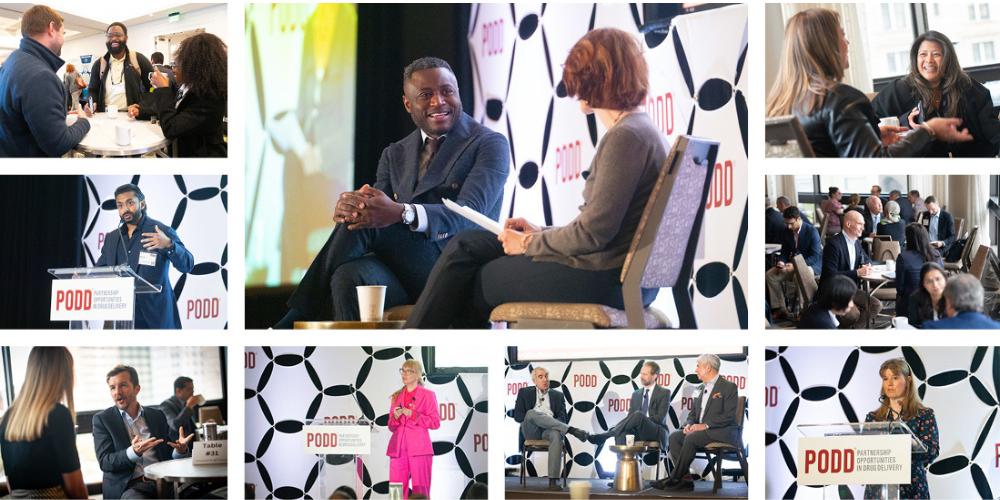Partnering Advice from the Eli Lilly Genetic Medicines Search & Evaluate Team Lead
Eli Lilly & Company's Dr Renee Williams, Associate Vice President, External Strategy, Genetic Medicine, discusses her partnering philosophy and advice to ensure successful partnerships between drug delivery and pharma companies.

Can you talk about the work you are leading at Eli Lilly & Company?
I lead External Strategy for Genetic Medicines at Eli Lilly and Company (Lilly). In other words, my team, Pablo Cabral (Senior Director), Antonieta Salguero (Associate Director), and Leonora Abdullahu (Associate Director), and I search globally for and evaluate the best nucleic acid-based technologies and associated delivery platforms, and partner them to complement our internal programs or expand our existing competencies. As the Lilly Genetic Medicines (LGM) Search & Evaluate team, we broadly support most therapeutic areas at Lilly, so our primary focus is on technologies currently in scope for Alzheimer’s and other neurodegenerative diseases, Pain, Diabetes, Obesity, and Immunology.
What is your partnering philosophy with respect to delivery technologies for genetic medicines?
No company is too early for my team to review. We love to see technologies at their infancy and provide guidance. Our long-term goals are to partner with industry leading talent and companies with technologies that are not only within our scope, but also have stage-appropriate derisking so we can execute quickly on mutually beneficial deals. LGM strives to be the preferred industry partner, regardless of deal type or size, and is building a global brand of maximizing returns for all parties. We recognize that the greatest challenge for genetic medicines as a modality is delivery, so we are hyper focused on partnering an array of potential solutions. To do so, we leverage several traditional tools such as direct equity investment for seed through series B companies, small material transfer agreements for discovery stage proof of concept (PoC), larger strategic collaborations, in/out licensing only, and acquisition.
In collaboration with the Corporate Business Development teams, LGM also engages in more innovative partnerships. CHORUS is focused specifically on supporting entry into GLP toxicology through a lean clinical stage PoC. CATALYZE makes the internal platform capabilities of Lilly accessible to the biotech ecosystem. Together, CHORUS and CATALYZE offer a unique way to partner with Lilly.
"Our long-term goals are to partner with industry leading talent and companies with technologies that are not only within our scope, but also have stage-appropriate derisking so we can execute quickly on mutually beneficial deals."
How can pharma companies and drug delivery companies better ensure successful partnerships and collaborations?
Communicating the details will make or break any partnership. Before signing a contract, I recommend the following:
Be sure you are aligned on the goals of the partnership. If it is an investment, understand what data are needed to enable a discovery PoC in the future and earmark some capital to complete those studies. If an MTA, make sure the scope includes the minimal key experiment to meet the requisites for a follow-on collaboration if results are positive. If you are engaged in a large collaboration, congratulations!
Build the work plans together with those responsible for executing them because they know best, and you need their buy-in to get the work done. Work plans should be included in the Appendix of the contract for reference.
Explicitly walk through the protocols for each experiment to ensure both parties are aligned with how the work will be executed. This is especially important when partnering with big pharma who often have validated protocols they prefer or may be obligated to use.
Define critical success factors (CSF) for all decision points so you can agree upon what good looks like before the work starts, and equally important, what happens if those CSF are not met.
Determine which party is doing the work and whether it will be done internally and/or through a CRO. If the latter, jointly agree on the CRO and their protocols, which might require a sample of their work product before deciding.
Identify who is responsible for specific costs, and how and when payment will occur, if applicable.
Agree on a cadence for updates and who, when, and how communications will occur.
The biggest mistake I see is rushing to sign a deal and assuming the rest will just fall into place. Yes, my recommendations are tedious, but I assure you the alternative is far worse. Partnerships are often long-term commitments that require a healthy relationship to succeed, so it is best to do everything you can to avoid downstream conflicts, which may include legal action, due to differences in unspoken expectations.
In this article:








